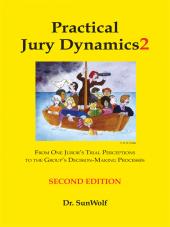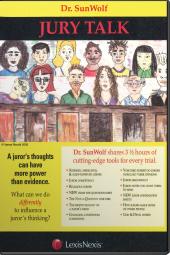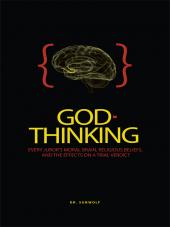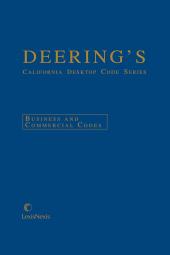Practical Jury Dynamics2
Select a format
 International Order Inquiry
International Order Inquiry
Select subscription type
Terms & conditions
Subscribers receive the product(s) listed on the Order Form and any Updates made available during the annual subscription period. Shipping and handling fees are not included in the annual price.
Subscribers are advised of the number of Updates that were made to the particular publication the prior year. The number of Updates may vary due to developments in the law and other publishing issues, but subscribers may use this as a rough estimate of future shipments. Subscribers may call Customer Support at 800-833-9844 for additional information.
Subscribers may cancel this subscription by: calling Customer Support at 800-833-9844; emailing customer.support@lexisnexis.com; or returning the invoice marked "CANCEL".
If subscribers cancel within 30 days after the product is ordered or received and return the product at their expense, then they will receive a full credit of the price for the annual subscription.
If subscribers cancel between 31 and 60 days after the invoice date and return the product at their expense, then they will receive a 5/6th credit of the price for the annual subscription. No credit will be given for cancellations more than 60 days after the invoice date. To receive any credit, subscriber must return all product(s) shipped during the year at their expense within the applicable cancellation period listed above.
The total price includes the product(s) listed in the Order Form and any Updates for a limited period (minimum period of 30 days) after the order is placed ("Order Window"). Shipping and handling fees are not included in the grand total price.
All shipments may be returned, at subscribers' expense, for full credit of the Price within 30 days of receipt.
Shipments may not be returned, and no credits will be issued, more than 30 days after receipt.
After the Order Window, subscribers will receive notice of Updates along with the then-current grand total price and order process as Updates become available. Subscribers will only be shipped those Updates they specifically request.
Product description
View a sample of this title using the ReadNow feature
Practical Jury Dynamics2 combines Practical Jury Dynamics with the 2005 and 2006 supplements (Jury Thinking and Juror Competency, Juror Compassion) and also includes new, valuable material.
The organization of Practical Jury Dynamics2 is designed to encourage more attention to three neglected parts of a Juror’s Trial World, in a three-part sequence:
* The Bio-physiology of a Juror’s Brain (What are a juror’s mental tools and limits?)
* The Social Psychology of a Juror’s Perceptions (How does a juror make sense of and evaluate the behaviors of other people?)
* The Effects of Group Dynamics on a Juror’s Vote (What happens when a juror becomes part of a group?)
Whether you are a trial practitioner or someone simply interested in the mysteries of juries, Practical Jury Dynamics2 will cause you to rethink your assumptions.
Topics Include:
* What Really Matters to Deliberating Juries
* A Juror’s TiVo® Mind
* The Electronic-Mediated Juror
* Juror Flipping and Regret
* Thinking Unaware
* Social Memory Contamination
* Mars and Venus Deliberate
* Deadlock Phobia
* Toxic Forepersons, Bailiffs, Jurors
* Uncovering a Juror’s Prosocial Helping
* The Velcro® Effect
* Faulty Norms of Deciding and Deliberating
* Social Loafing in the Juryroom
* Why Good Jurors Protect Bad Jurors
For more information on this title, visit the Practical Jury Dynamics landing page.
eBooks, CDs, downloadable content, and software purchases are noncancelable, nonrefundable and nonreturnable. Click here for more information about LexisNexis eBooks. The eBook versions of this title may feature links to Lexis+® for further legal research options. A valid subscription to Lexis+® is required to access this content.
Table of contents
TABLE OF CONTENTS
Foreword
10 Practical Features of this Book
Prologue
Forethoughts to the Second Edition
PART I: STUDYING JURORS
Chapter 1. KNOWING JURORS
1-1. Three Jury Epiphanies
1-2. The Mystery of Jury Deliberations
1-3. The Problems of Jury Research
PART II: THE BIO-PHYSIOLOGY OF A JUROR’S BRAIN
Chapter 2. THE MIND IS A CRAZY QUILT
2-1. The Crowd Living in a Juror’s Mind
2-2. How a Juror Becomes Aware of a “Fact.”
2-3. Juror Listening and Attention Errors
2-4. Biological Basis for Attention
Chapter 3. “TRIALS” ARE IN THE BRAINS OF THE BEHOLDERS
3-1. The Influence of Color Perception
3-2. Remembering and Forgetting
Chapter 4. RIGHT MIND/LEFT MIND? HOW OUR BRAIN’S HEMISPHERES REALLY FUNCTION
4-1. Right Mind/Left Mind
4-2. Regions of the Brain That Process Language
Chapter 5. FROM JUROR-COGNITION TO JUROR-EMOTION
5-1. The Purpose of Emotions in Human Survival
5-2. Physiology of Jurors’ Emotions When They Judge Other People’s Behaviors
5-3. How Emotional Arousal Impacts Juror Thinking about Other People
5-4. The Vividness Effect: Sensual Persuasion
5-5. The Velcro® Effect
5-6. The Effects of Juror Mood on Juror Reasoning
5-7. Deliberating Under the Influence of Stress
5-8. The Effect of Stress on Citizens Selected for Jury Duty
5-9. Anxiety: A Traveling Companion of Juror Stress
5-10. The Effect of Sleep Debt on Juror Competency
Chapter 6. BELIEFS AND THINKING
6-1. Biology of Beliefs
6-2. A Juror’s TiVo® Mind
6-3. Religious Beliefs
6-4. The God Factor
6-5. Differences that Make a Difference in Juror Thinking
6-6. Juror Thinking about God and Science
Chapter 7. THINKING UNAWARE
7-1. Blink
7-2. Mental Leaps
PART III: THE SOCIAL PSYCHOLOGY OF A JUROR’S PERCEPTIONS
Chapter 8. FROM A FOCUS ON SELLING TOWARDS A FOCUS ON BUYING
8-1. Information Anxiety
8-2. Creating Empty Spaces as Evidence
8-3. Toxic Language
Chapter 9. HOW THE JUROR’S BRAIN TALKS TO ITSELF DURING TRIAL
9-1. Mental Filters and Misperceptions
9-2. Social Perception: What a Juror Sees Is What You Get
9-3. Mental Short-Cuts a Juror Uses in Perception
9-4. The Influence of Juror Categories and Schemas
Chapter 10. A JUROR’S SOCIAL THINKING: How a Juror Makes Sense of the Behaviors of Other People
10-1. Social Thinking and Juror Decision Making
10-2. Juror Attributions
10-3. The Effect of Novel Events
10-4. Fundamental Attribution Error
10-5. False Consensus Error
10-6. False Uniqueness Error
10-7. Attributions of Blame
10-8. Locus of Control
10-9. Cracked Perceptual Lenses
10-10. A Practical Approach to Gaining Access to Juror Attitudes
Chapter 11. THE DILEMMA OF A JUROR’S UN-THINKING TASK
11-1. Intrusive Thoughts
11-2. Controlled Un-Believing
11-3. A Juror’s Cognitive Load
11-4. The Bad Experience Closet
11-5. The Set-it-Aside Agenda
Chapter 12. IMPERFECT THINKING
12-1. Machine-Thinking
12-2. Wabi-Sabi Minds
12-3. Thinking in Paradox
Chapter 13. SYMBOLIC THINKING
13-1. God Words and Devil Words
13-2. Metaphor and Thought
PART IV: THE EFFECTS OF GROUP DYNAMICS ON A JUROR’S VOTE
Chapter 14. THE WORK OF JURY WORK: WHEN INDIVIDUAL JURORS
BECOME A GROUP
14-1. The Faulty Norms of Jury Deliberations
14-2. Changing the Way Jurors Deliberate
Chapter 15. SOCIAL VERDICTS (THE RELATIONAL SIDE OF JURY DECISION-MAKING)
15-1. Symbolic Convergence Theory: Groups and Fantasies
15-2. Social Opinions
15-3. Social Cliques
15-4. Primary Tension and Secondary Tension: What Blocks the Jury’s Task?
15-5. Mars and Venus Deliberate--Gender in the Jury Room
15-6. Salads, Stews, and Surprising Effects of Juror Diversity
Chapter 16. EMOTIONAL DELIBERATIONS
16-1. Emotional Persuasion
16-2. Laughing on the Road to a Verdict
16-3. Effects of Emotion on Juror Mood
16-4. Emotional Argument
16-5. Angry Argument: All People Are Afraid of the Anger of Others
16-6. Emotional Pollution
16-7. Groupmood
Chapter 17. JUROR COMPETENCY
17-1. A Juror’s Trial Task (Competent to do what, exactly?)
17-2. Juiced Jurors
17-3. Multitasking Jurors
17-4. Fluctuating Competency
17-5. Juror Accommodation
Chapter 18. JUROR COMPASSION
18-1. Compassion in the Courtroom
18-2. Measuring Compassion
Chapter 19. THE SHADOW SIDE OF JURY DECISION MAKING
19-1. Grouphate
19-2. Social Loafing
19-3. Missing in Action! Jurors Who Disappear in the Jury Room
19-4. Toxic Jurors
19-5. Seizing Speaking Turns
19-6. What Really Happens When One Juror Leaves the Room
19-7. Improperly Speculating
19-8. Ignoring Misconduct of Fellow Jurors
19-9. The Shadow Side of Jury Leadership
19-10. The Consensus Disease
Chapter 20. DECISIONAL REGRET IN THE JURY ROOM
20-1. Juror Overconfidence
20-2. Counterfactual Thinking: Changing the Facts
20-3. Woulda/Coulda/Shoulda Minefields
20-4. Why Deliberations Are a Set-Up for Woulda/Coulda/Shoulda Thinking
20-5. A Storied Theory of Jury Deliberations
20-6. Regret Contagion, GroupRegret, and Decisional Avoidance
20-7. Story Plugs
20-8. Coherence-Based Reasoning Theory
Chapter 21. RE-THINKING
21-1. Juror Flipping
21-2. Ignoring Regret
21-3. If-Only Thinking
21-4. Binge-Think
Chapter 22. STORY-THINKING AND FANTASIES DURING DELIBERATIONS
23-1. The Storymaking-Mind of a Juror
22-2. Story Battles in Deliberation
22-3. Opening the Jury Room’s Door: Making Sense of the Story Battles
22-4. Storytelling Functions in Deliberations
22-5. When Fantasies Collide: Symbolic Convergence Theory and Jury Decision Making
22-6. Story Strategies for Attorneys
Chapter 23. JURY-JOINING
23-1. Collaborative Dialogues: How to Discuss What Matters Most
23-2. Non-Question Voir Dire
23-3. Collaborating on Solutions
23-4. Collaborative Challenges for Cause
23-5. Collaborative Closing Arguments
Chapter 24. OPENING WINDOWS TO THE BLACK BOX OF JURY DELIBERATIONS
24-1. Curing Ignorance about Jurors’ Rights
24-2. Reasons Jurors Think They Shouldn’t Communicate with the Judge
24-3. Gaining An Ear to the Jury Wall
24-4. Why Jurors Protect Bad Jurors
24-5. Toxic Bailiffs: The Virus Every Jury Is Exposed To
24-6. Exposing the Myths of Juries and Jurors
PART V: TRIAL CULTURE
Chapter 25 NEW TOOLS FOR EVERY TRIAL
25-1. How a Juror Listens to an Expert’s Opinion
25-2. Organizing Juror Information
25-3. Jury Markers
25-4. Practical Juror Motions
25-5. Tools for Learning About Jury Pools
Chapter 26. STRUCTURES THAT INFLUENCE THINKING
26-1. Jury Studies: Updates
26-2. Jury Reform
Chapter 27. THINKING UPSIDE DOWN
27-1. When Jurors Rebut Your Closing
27-2. PlayingAttention with the Final Act of Jurying
Chapter 28. PAYING ATTENTION TO THE COMPLEX CULTURE OF TRIALS
28-1. Enculturation: How Jurors Get Sucked Into a Strange System
28-2. Twenty Stressful Realities of a Juror’s Experience
Chapter 29. THE ELECTRONIC-MEDIATED JUROR
29-1. The Google™ Effect
29-2. Cell Phones
29-3. Social Network Sites as Unconfronted Trial Evidence
29-4. The Blog Effect
Chapter 30. REDUCING TOXIC TRIAL STRESS
30-1. Avoiding The Helper’s Pit
30-2. Empathy-Driven versus Distress-Driven Advocacy
30-3. Ever Aftering, in Practical Ways
30-3(a). The Janus Effect
APPENDICES: RESOURCES, BOOKS, MATERIALS, TOOLS
Principles For Juries And Jury Trials, American Jury Project
Principle 1 -- The Right To Jury Trial Shall Be Preserved
Principle 2 -- Citizens Have The Right To Participate In Jury Service And Their Service Should Be Facilitated
Principle 3 -- Juries Should Have 12 Members
Principle 4 -- Jury Decisions Should Be Unanimous
Principle 5 -- It Is The Duty Of The Courts To Enforce And Protect The Rights To Jury Trial And Jury Service
Principle 6 -- Courts Should Educate Jurors Regarding The Essential Aspects Of A Jury Trial
Principle 7 -- Courts Should Protect Juror Privacy Insofar As Consistent With The Requirements Of Justice And The Public Interest
Principle 8 -- Individuals Selected To Serve On A Jury Have An Ongoing Interest In Completing Their Service
Principle 9 -- Courts Should Conduct Jury Trials In The Venue Required By Applicable Law Or The Interests Of Justice
Principle 10 -- Courts Should Use Open, Fair And Flexible Procedures To Select A Representative Pool Of
Prospective Jurors
Principle 11 -- Courts Should Ensure That The Process Used To Empanel Jurors Effectively Serves The Goal Of Assembling A Fair And Impartial Jury
Principle 12 -- Courts Should Limit The Length Of Jury Trials Insofar As Justice Allows And Jurors Should Be Fully Informed Of The Trial Schedule Established
Principle 13 -- The Court And Parties Should Vigorously Promote Juror Understanding Of The Facts And The Law
Principle 14 --The Court Should Instruct The Jury In Plain And Understandable Language Regarding The
Applicable Law And The Conduct Of Deliberations
Principle 15 -- Courts And Parties Have A Duty To Facilitate Effective And Impartial Deliberations
Principle 16 -- Deliberating Jurors Should Be Offered Assistance When An Apparent Impasse Is Reported
Principle 17 -- Trial And Appellate Courts Should Afford Jury Decisions The Greatest Deference Consistent
With Law
Principle 18 -- Courts Should Give Jurors Legally Permissible Post-Verdict Advice And Information
Principle 19 -- Appropriate Inquiries Into Allegations Of Juror Misconduct Should Be Promptly Undertaken By The Trial Court
Resources and Tools
Browse the Stacks
Gratitudes
Who Is the Author?
Endnotes
Index
 Lexis Nexis
Lexis Nexis 


